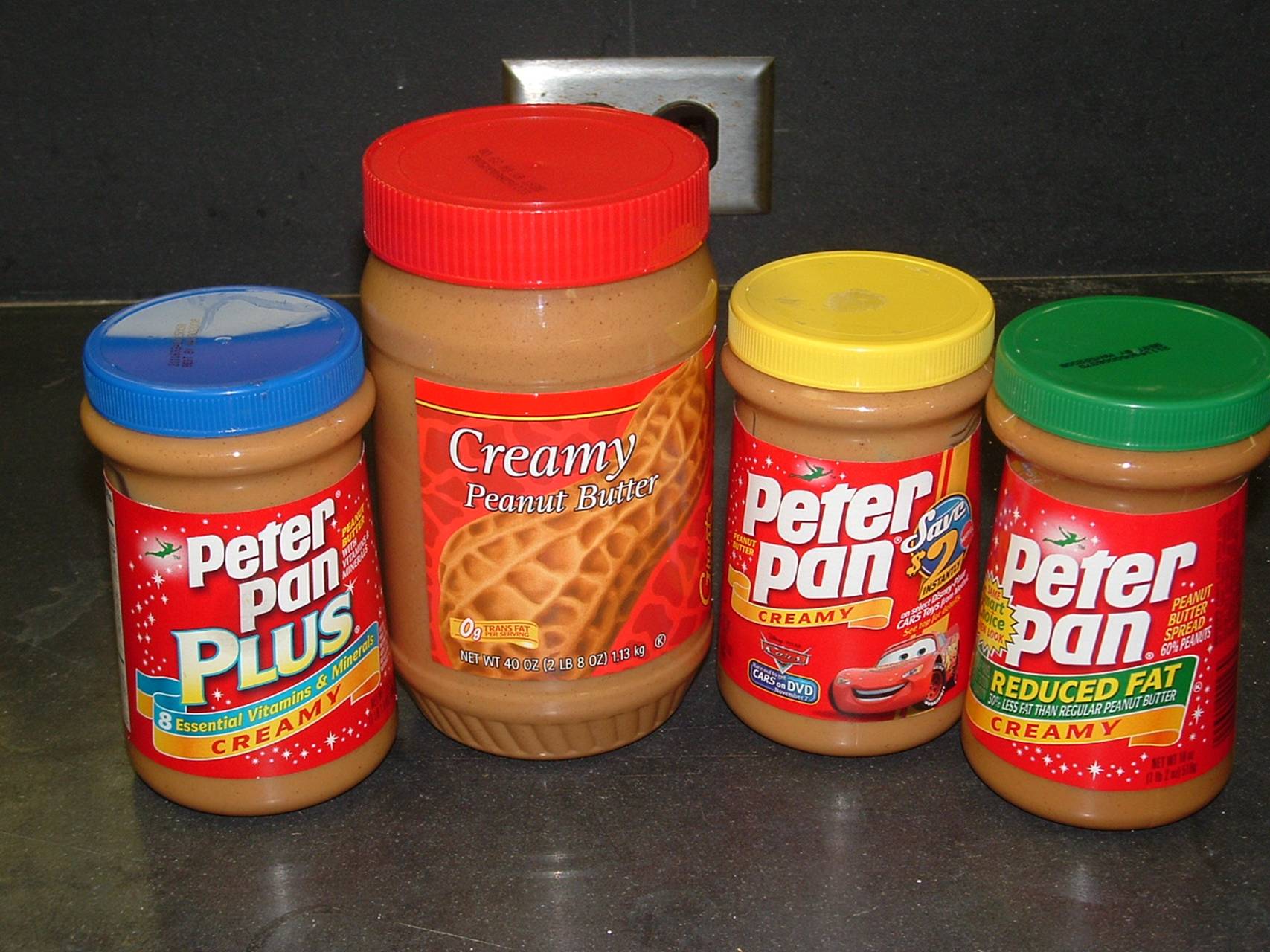The National Peanut Board is joining Jif and Peter Pan in attempting to save American newspapers by investing in advertizing to woo back skeptical consumers.
 In a press release and full-page letter in USA Today on Wednesday (thanks, Margaret – dp) peanut producer pooh-bahs announced they will set up shop in Vanderbilt Hall in New York City’s Grand Central Terminal March 4 and 5 to meet consumers, answer questions and give away samples of peanuts, peanut butter and other peanut items. The event kicks off the farmers’ efforts nationally to rebuild consumer confidence in products made with the crops they grow.
In a press release and full-page letter in USA Today on Wednesday (thanks, Margaret – dp) peanut producer pooh-bahs announced they will set up shop in Vanderbilt Hall in New York City’s Grand Central Terminal March 4 and 5 to meet consumers, answer questions and give away samples of peanuts, peanut butter and other peanut items. The event kicks off the farmers’ efforts nationally to rebuild consumer confidence in products made with the crops they grow.
Roger Neitsch, Texas peanut farmer and chairman of the National Peanut Board — the research and promotion board funded by peanut growers, said,
“No one is more deeply disturbed by the recent salmonella crisis than the thousands of USA peanut farmers and their families. We may be peanut farmers, but we also are fathers, mothers, sons and daughters — and consumers. So we understand and share the concerns being experienced these days by families across America.”
But is recruiting celebrity chefs and athletes, while portraying farmers as producers of all things safe, really enough?
Noted science-and-society type, Dorothy Nelkin, noted in 1995 that, efforts to convince the public about the safety and benefits of new or existing technologies — or in this case the safety of the food supply — rather than enhancing public confidence, may actually amplify anxieties and mistrust by denying the legitimacy of fundamental social concerns. The public expresses a much broader notion of risk, one concerned with, among other characteristics, accountability, economics, values and trust.
 As I’ve said before, the best food producers, processors, retailers and restaurants should go above and beyond minimal government and auditor standards and sell food safety solutions directly to the public. The best organizations will use their own people to demand ingredients from the best suppliers; use a mixture of encouragement and enforcement to foster a food safety culture; and use technology to be transparent — whether it’s live webcams in the facility or real-time test results on the website — to help restore the shattered trust with the buying public.
As I’ve said before, the best food producers, processors, retailers and restaurants should go above and beyond minimal government and auditor standards and sell food safety solutions directly to the public. The best organizations will use their own people to demand ingredients from the best suppliers; use a mixture of encouragement and enforcement to foster a food safety culture; and use technology to be transparent — whether it’s live webcams in the facility or real-time test results on the website — to help restore the shattered trust with the buying public.
The makers of Jif and Peter Pan have already gone on record saying they will not disclose their own food safety test results.
Nelkin, D. 1995. Forms of intrusion: comparing resistance to information technology and biotechnology in the USA in Resistance to New Technology ed. by M. Bauer. Cambridge University Press, New York. pp. 379-390.


 “We’re really concerned. This is not over yet.”
“We’re really concerned. This is not over yet.” 
.jpg) “While most successful food producers are far more diligent — big name-brand peanut butter is considered safe, for example — American consumers have faced far too many food-supply emergencies in the last few years.”
“While most successful food producers are far more diligent — big name-brand peanut butter is considered safe, for example — American consumers have faced far too many food-supply emergencies in the last few years.”(1)(1).jpg) “President Obama promised during the campaign to create a government that does a better job of protecting the American consumer. The nation’s vulnerable food supply is a healthy place to start.”
“President Obama promised during the campaign to create a government that does a better job of protecting the American consumer. The nation’s vulnerable food supply is a healthy place to start.” Finding the right words can be rewarding. As Jimmy Buffett sings,
Finding the right words can be rewarding. As Jimmy Buffett sings,  If someone like Stewart Parnell, CEO of Peanut Corporation of America, wants to break the law, it will get broken, regardless of who is President.
If someone like Stewart Parnell, CEO of Peanut Corporation of America, wants to break the law, it will get broken, regardless of who is President..jpg)
.jpg) This year I’ve spent time in candy aisles rather than calculus lectures, scanning for recalled Valentine’s chocolate linked to the current Salmonella outbreak. As I wrote in
This year I’ve spent time in candy aisles rather than calculus lectures, scanning for recalled Valentine’s chocolate linked to the current Salmonella outbreak. As I wrote in  Chocolate is a not uncommon vector for Salmonella. In 2006 both Cadbury and Hershey brand chocolate products were associated with separate Salmonella contamination. Cadbury recalled over 1 million chocolate bars in the UK after more than 40 consumers were sickened, and 3 were hospitalized due to Salmonella contamination from poor plant sanitation. A few months later, Hershey Canada recalled candy products due to possible Salmonella contamination, and though there were no reported illnesses, some of this recalled Hershey product re-entered the marketplace two years later.
Chocolate is a not uncommon vector for Salmonella. In 2006 both Cadbury and Hershey brand chocolate products were associated with separate Salmonella contamination. Cadbury recalled over 1 million chocolate bars in the UK after more than 40 consumers were sickened, and 3 were hospitalized due to Salmonella contamination from poor plant sanitation. A few months later, Hershey Canada recalled candy products due to possible Salmonella contamination, and though there were no reported illnesses, some of this recalled Hershey product re-entered the marketplace two years later. Early reporting
Early reporting  Other revelations underpinning the Salmonella outbreak:
Other revelations underpinning the Salmonella outbreak: The Texas Department of Health said in a statement the plant temporarily closed Monday night at the request of health officials after the tests found "the possible presence of salmonella" in some of its products.
The Texas Department of Health said in a statement the plant temporarily closed Monday night at the request of health officials after the tests found "the possible presence of salmonella" in some of its products..jpg) At a gas station in North Fulton, Karan Singh eyed with suspicion a pile of energy bars, cookies and snacks that had been laid at the check-out counter for purchase, telling a customer,
At a gas station in North Fulton, Karan Singh eyed with suspicion a pile of energy bars, cookies and snacks that had been laid at the check-out counter for purchase, telling a customer, Kroger stores are alerting customers who have a Kroger Plus Card of any recalled purchases through automated phone calls.
Kroger stores are alerting customers who have a Kroger Plus Card of any recalled purchases through automated phone calls. So far, the salmonella outbreak has been linked to 575 illnesses and eight deaths, and more than 1,500 products have been recalled, including cookies, ice cream and pet food.
So far, the salmonella outbreak has been linked to 575 illnesses and eight deaths, and more than 1,500 products have been recalled, including cookies, ice cream and pet food.